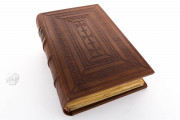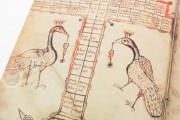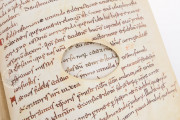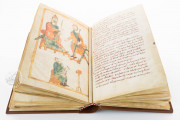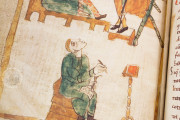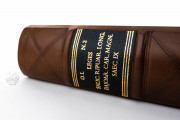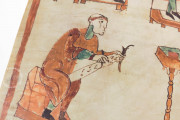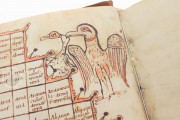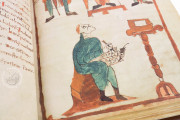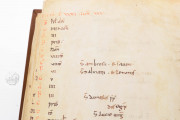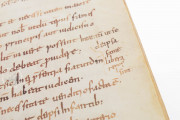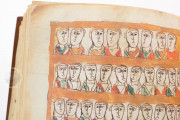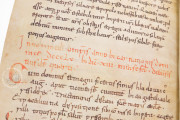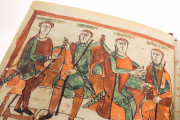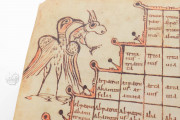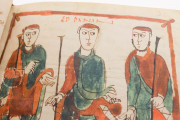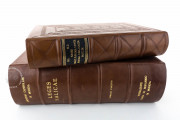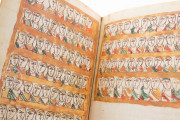The Leges Salicae is a collection of legal tracts from the Merovingian and Carolingian periods. It is dated to 990-991 based on the year starting the calendar and although its exact origin is unknown, it was likely made in northern Italy. For a legal text, it unusually features eight pictorial pages including a picture of Charlemagne and Pepin of Italy. The composition and figural style are Carolingian with a naïve manner that adds charm to an otherwise serious text.
This book contains Leges Salica, Ribuaria, Langobardorum, Alamannorum, and Baiuvariorum as well as portions of Isidore’s Etymologies and various Carolingian capitularies. Written in Latin in Caroline minuscule, it exemplifies the importance of Carolingian laws in the governance of Western Europe.
A Law Book Depicting Legislators and Kings
This copy includes seven illuminations of historical Salic and Ribuarian legislators and kings, the authorities behind the legal text. Prefixing the Carolingian capitularies is an image of Charlemagne and his son, Pepin of Italy, enthroned. In all of these images, a tonsured scribe is seated below them in the act of writing. Colors are limited to brown, mustard yellow and teal green, applied rather clumsily in flat areas with little attempt at shading.
Most unusual is the depiction of the busts of 160 legislators in multiple registers across three full pages. Also included is a tree of consanguinity illustrating familial relations surrounded by four birds. The two above are birds of prey with captured creatures in their beaks. The lower two are peacocks, their beaks holding ornaments. The naïve figural art suggests a provincial scriptorium.
The “Barbarian” Foundations of Frankish Law
The earliest written records of the “Lex Salica” or Salic law, the law code of the western Franks, date to circa 500 under King Clovis, the founder of the Merovingian dynasty. Before this time, Germanic law was governed by oral tradition, as opposed to the written and practiced Roman law.
Probably the most important aspect of Salic law in the shaping of western Europe was the codification of agnatic, or male-line, succession, which excluded women from property inheritance and from it developed the practice of primogeniture. The Carolingians continued to amend the Salic law and recorded various other northern law codes.
Of Likely Northern Italian Origin
There is no record of the law book outside of Modena Cathedral, where it has presumably spent its entire life. The relatively large numbers of post-Carolingian law books like this one indicate a shift from centralized to local justice, especially in places like northern Italy. The manuscript copies the Concordia de singulis causis of Eberhard of Friaul, a key component of the Lex Langobardorum, making it more likely that its origins are in or near Modena.
We have 1 facsimile edition of the manuscript "Leges Salicae": Leges Salicae facsimile edition, published by Il Bulino, edizioni d'arte, 2008
Request Info / Price

